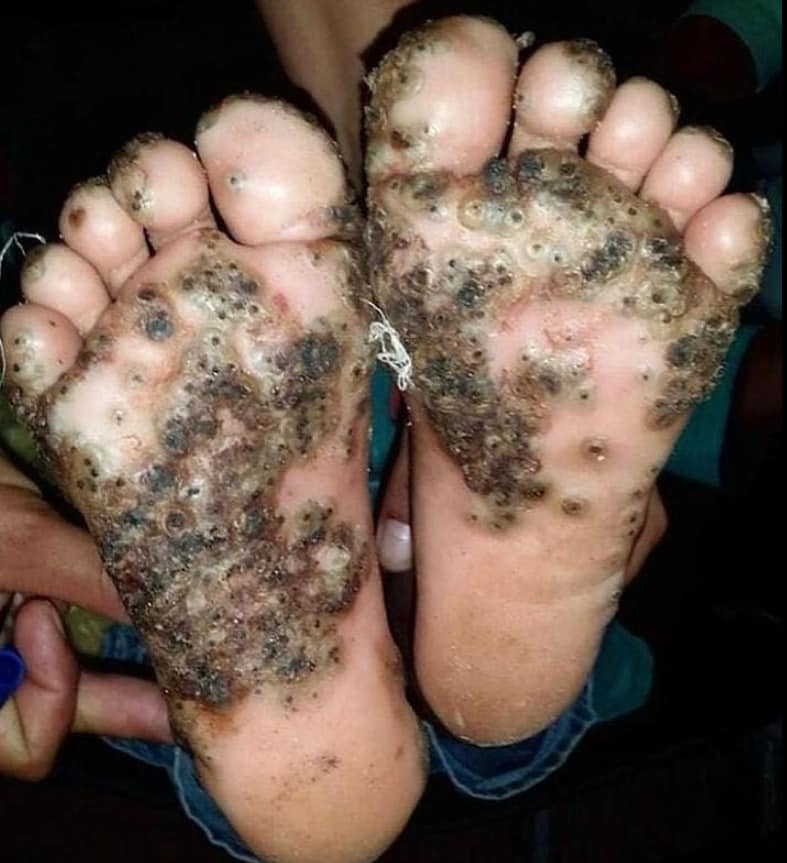Tungiasis is a parasitic skin infection caused by the Tunga penetrans flea (also known as the sand flea, jigger, or chigoe flea). This tiny flea burrows into the skin of the feet, causing pain, itching, swelling, and infection. If left untreated, it can lead to serious complications.

🌍 Where Does Tungiasis Occur?
🔹 Common in tropical and subtropical regions (Africa, South America, the Caribbean, and parts of Asia).
🔹 Found in sandy areas, rural villages, beaches, and animal shelters.
🔹 People walking barefoot or with open sandals are at higher risk.
⚠️ Symptoms of Tungiasis
🔸 Itching & Pain – A tingling or burning sensation in the affected area.
🔸 Small Black Spot – The flea’s entry point on the skin.
🔸 Swelling & Redness – The area becomes inflamed as the flea grows inside.
🔸 White Ring Around the Spot – Indicates the flea has laid eggs.
🔸 Secondary Infection – Pus, ulcers, and possible bacterial infections if untreated.
🩺 How to Treat Tungiasis?
1️⃣ Remove the Flea – A doctor may extract it with sterile tools.
2️⃣ Disinfect the Area – Use antiseptics (iodine, hydrogen peroxide) to prevent infection.
3️⃣ Apply Antibiotic Ointment – Helps prevent bacterial infections.
4️⃣ Keep Feet Clean & Dry – Reduces reinfection risk.
5️⃣ Pain Relief – Take anti-inflammatory medication if needed.
🛡️ How to Prevent Tungiasis?
✅ Always Wear Shoes – Avoid walking barefoot in sandy or infested areas.
✅ Apply Natural Repellents – Coconut oil, neem oil, or insect sprays help repel fleas.
✅ Keep Surroundings Clean – Regularly clean floors, animal shelters, and sand areas.
✅ Check Feet Regularly – Especially if you’ve traveled to high-risk areas.
🚨 When to See a Doctor?
🔺 If the area becomes severely swollen, painful, or infected.
🔺 If you notice multiple burrows or spreading sores.
🔺 If you develop fever or signs of systemic infection.
💡 Tungiasis is preventable! Have you ever heard of this condition before? Stay safe and protect your feet! 👣💙
